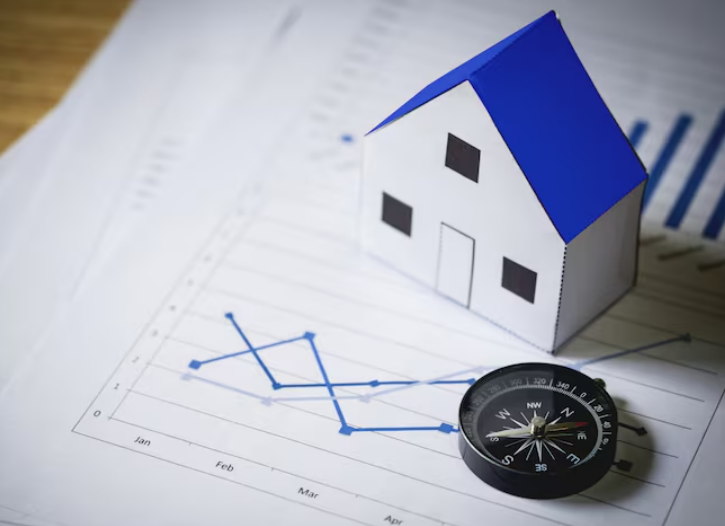Are Desktop Appraisals Accepted In Gilbert Instead Of Onsite Inspections?

The real estate landscape in the Greater Phoenix area—particularly in Gilbert, Arizona—has experienced rapid growth over the past two decades. Families are drawn to the area for its excellent schools, safe neighborhoods, vibrant job market, and mix of established communities and new-build subdivisions. With these rising demands comes an increased need for efficient, accurate, and timely property valuations, which is where expert real estate appraisers play a crucial role, helping buyers, sellers, and lenders navigate competitive timelines with confidence. Traditionally, determining a property’s fair market value meant arranging an onsite appraisal. In that process, a licensed appraiser physically visits the property, measures rooms, photographs the home, evaluates the condition, and compares it with similar recent sales. But over the past few years—especially accelerated by the COVID-19 pandemic—alternative methods like the desktop appraisal have emerged as viable options in certain circumstances.
A desktop appraisal is a valuation performed without the appraiser ever stepping foot on the property. Instead, the opinion of value is based on data: tax records, MLS listings, verified floor plans, public records, and photographs, often supplied by the seller, real estate agent, or third‑party services. This method can deliver faster turnaround times and lower costs, but it’s not universally accepted and comes with eligibility and accuracy considerations.
In Gilbert’s competitive market—where a well‑priced home can go under contract in days—knowing whether a desktop appraisal will meet the needs of your specific transaction is critical. Mortgage lenders, government‑sponsored entities (GSEs) like Fannie Mae and Freddie Mac, and Arizona state appraisal regulations all have a say in whether a desktop appraisal is acceptable.
What Is a Desktop Appraisal?
A desktop appraisal is a remote property valuation performed by a licensed or certified appraiser, such as a top real estate appraiser in AZ, without physically visiting the site. The term “desktop” refers literally to the appraiser sitting at their desk, using a variety of digital, photographic, and documentary data to determine a home’s market value.
Core characteristics:
-
Data-driven: Sources may include MLS records, county assessor data, deeds, prior appraisal reports, floor plans, and photographs.
-
Standardized forms: Fannie Mae uses Form 1004 Desktop, and Freddie Mac uses Form 70D. These forms distinguish desktop appraisals from hybrid or full inspections by specifying “scope of work” limitations.
-
Third-party contributions: Photos or measurements may be collected by homeowners, listing agents, or inspection contractors.
-
Comparable sales: Like any appraisal, comparable properties are analyzed for location, size, condition, amenities, and date of sale.
Why they became popular:
Initially, use cases included remote or rural properties, inaccessible homes due to safety issues, or fast‑moving transactions needing rapid valuation. COVID-19 amplified their appeal when in‑person visits posed health risks.
Not to be confused with:
-
Drive-by appraisals: Where the appraiser views the exterior in person.
-
Hybrid appraisals: Where a third party inspects the property and sends data to an appraiser.
In a desktop appraisal, all observations are made from existing records—there’s no direct sensory assessment (e.g., touching surfaces, smelling for mold, seeing fine details).
For a city like Gilbert, where many neighborhoods are relatively young, with well‑documented builds, robust MLS history, and similar comparable properties, desktop appraisals conducted by a top real estate appraiser in AZ can sometimes be highly accurate. But they depend heavily on current and comprehensive data—which is not guaranteed.
How Does a Desktop Appraisal Differ from an Onsite Inspection?
The hallmark difference is physical presence. In a standard onsite appraisal, the appraiser walks through the property, takes their own measurements, captures photographs, and notes visual details about condition, quality, and any potential issues or repairs needed. They also observe external factors: street noise, neighborhood upkeep, curb appeal, landscaping quality.
A side-by-side breakdown:
|
Factor |
Desktop Appraisal |
Onsite Appraisal |
|
Physical visit |
None |
Required |
|
Data source |
Public records, MLS, provided photos |
Firsthand observation + public records |
|
Measurement |
From floor plans / public data |
Taken on-site with tools |
|
Condition notes |
Based on photos/reports submitted |
Direct observation during walkthrough |
|
Accuracy |
Dependent on data quality |
High (given competent appraiser) |
|
Turnaround |
Faster (1–3 days possible) |
Longer (5–10+ days in busy markets) |
|
Cost |
Lower |
Higher |
Why it matters:
Onsite inspections naturally capture more intangible details. An appraiser might see water stains suggesting a roof leak or hear a noisy HVAC unit. They can physically verify upgrades or spot unpermitted work. In a desktop assignment, such nuances might be missed if they’re not visible in provided records.
In Gilbert:
For newer tract homes or well‑maintained properties with extensive MLS photo history, differences in valuation between desktop and onsite may be minimal. For older homes, custom builds, or luxury properties with unique features—onsite offers greater reliability.
Are Desktop Appraisals Accepted in Gilbert, Arizona?
As of August 2025, desktop appraisals are accepted for certain transactions in Gilbert, but eligibility is narrow, primarily defined by Fannie Mae, Freddie Mac, and lender overlays.
Common acceptance criteria:
- One‑unit, single‑family principal residences (may include an Accessory Dwelling Unit).
- Purchase transactions only—most refinances and second‑home purchases are excluded.
- Loan-to-Value (LTV) ratio of 90% or lower (generally ≥10% down payment).
- Automated underwriting (DU for Fannie Mae, LPA for Freddie Mac) approves the desktop option.
- Required exhibits provided—most importantly, a floor plan showing interior wall placement and dimensions.
Not accepted for:
- Condos, manufactured homes, co‑ops.
- Multi‑unit (2–4) properties.
- Renovation or construction loans.
- High‑LTV loans or those outside GSE underwriting acceptance.
Regulatory framework:
- Arizona’s Department of Financial Institutions enforces appraiser licensing and adherence to USPAP.
- USPAP allows desktops if limitations are disclosed and the report is not misleading.
Bottom line in Gilbert: If your purchase meets GSE rules and you or your Realtor can supply detailed, verifiable floor plans and photos, a desktop appraisal may be an option. Otherwise, expect to be required to do an onsite inspection.
Desktop Appraisal Regulations and USPAP Standards in Arizona
USPAP (Uniform Standards of Professional Appraisal Practice) governs appraisal ethics and performance across the U.S., including Arizona. It doesn’t forbid desktop appraisals; rather, it requires the appraiser to:
- Define the scope of work.
- Identify data sources.
- Disclose limitations.
- Ensure conclusions are credible for intended use.
Arizona-specific obligations:
- Appraisers must maintain active state licenses or certifications in good standing.
- Reports must clearly state “no physical inspection conducted” for desktop work.
- All photographs must have sources and dates labeled.
- Floor plans included must be to scale and show interior walls.
- If relying on third-party data, the appraiser must assess reliability—outdated or unverifiable data is a red flag.
Failing to disclose limitations or using unreliable data violates both USPAP and state law, potentially leading to license discipline and report rejection.
For lenders and consumers in Gilbert:
Working with an appraiser who understands GSE guidelines and Arizona’s USPAP enforcement helps avoid costly closing delays.
When Are Desktop Appraisals Appropriate in Gilbert?
Appropriate use cases in Gilbert include:
- Newer tract homes: Built within the past 10–15 years in subdivisions with many recent comparable sales.
- Well‑documented listings: Homes recently listed or sold with ample, high‑resolution photos, detailed floor plans, and recent inspections.
- Purchase transactions: Where buyers are making substantial down payments.
- Time-sensitive deals: Competitive bidding or relocation deadlines.
- Temporary access restrictions: Storm damage, health hazards, or pandemic‑era protocols.
Not recommended for:
- Custom or luxury properties: Unique materials, architectural details, or high‑end finishes often require in‑person evaluation.
- Homes with extensive unrecorded upgrades: Without visible or documented proof, upgrades may not reflect in desktop valuations.
- Properties in flux: Under renovation or with incomplete repairs.
Benefits of Desktop Appraisals for Gilbert Residents
Primary benefits:
- Speed: Reports can be completed in 1–3 days, accelerating loan approvals.
- Lower cost: Typically $75–$200 less than onsite in Arizona.
- Convenience: No scheduling or home prep for an inspection visit.
- Market suitability: Works well for newer, uniform neighborhoods common in Gilbert.
- Accessibility: Allows out‑of‑area appraisers with geographic competency to perform valuations without travel.
For sellers, faster appraisals help keep deals moving; for buyers, they can be the difference between winning and losing a home in a multiple‑offer situation.
Risks and Limitations of Desktop Appraisals
Key risks:
- Data quality issues: Old or misleading photos, incomplete records.
- Overlooked defects: Water damage, structural issues not visible in photos.
- Ineligibility: Lenders rejecting desktop reports if they don’t meet criteria.
- Appraisal gaps: Value may come in lower if upgrades aren’t documented.
- Fraud potential: Manipulated images or staged spaces.
Mitigation: Work with trusted appraisers, supply accurate and recent documentation, and verify eligibility beforehand.
How Eagle Home Appraisal Gilbert Supports Clients
At Eagle Home Appraisal Gilbert, we:
- Vet each assignment for desktop eligibility before acceptance.
- Provide homeowners and agents with a checklist for needed photo angles, floor plan formats, and document standards.
- Apply deep Gilbert market knowledge to choose accurate comparable sales.
- Keep communication clear with lenders on scope and limitations.
- Offer honest guidance when onsite is the better choice.
- Maintain USPAP compliance and state regulation adherence at every step.
Our focus is on balancing speed and accuracy—protecting your transaction while meeting tight deadlines when possible.
Legal and Lending Implications in Gilbert
Legal contexts:
In divorce, estate, or tax disputes, desktop reports are sometimes challenged on credibility, especially if the property condition is contested. Courts prefer full inspections for contentious matters.
Lending contexts:
If GSE rules are met, desktops can expedite purchases. But a lender who mistakenly uses a desktop on an ineligible loan risks GSE buy‑back demands—serious financial exposure. If any critical exhibit (e.g., floor plan) is missing, the report is invalid for GSE sale.
For Gilbert borrowers, this means ensuring your lender has explicitly confirmed desktop approval from underwriting before proceeding.
Conclusion
Desktop appraisals have carved out a legitimate role in Gilbert’s real estate market—but only for specific properties, transaction types, and under strict compliance rules. They can save time and money and serve well-documented, standard homes. Conversely, they are risky for unique, older, or upgraded properties lacking thorough records.
At Eagle Home Appraisal Gilbert, our role is to evaluate your scenario honestly, confirm eligibility, and deliver the most credible and defensible appraisal possible—desktop or onsite. In a booming market like Gilbert’s, that combination of speed, compliance, and accuracy can make all the difference between a smooth closing and a delayed, costly one.
Next Up: Understanding property size is crucial in real estate. In our next post, we’ll explore How Do Appraisers Measure Square Footage in Gilbert Real Estate? and explain why precise measurements are essential for accurate property valuations and informed buying or selling decisions.
Divorce Appraisals
At Eagle Home Appraisal Gilbert, we specialize in providing expert divorce appraiser services, offering expert witness testimony when necessary.
Estate & Trust Appraisals
At Eagle Home Appraisal Gilbert, we offer a comprehensive range of professional estate appraisal services to facilitate estate and trust planning.
IRS & Tax Appraisals
At Eagle Home Appraisal Gilbert, we specialize in providing professional IRS tax appraisal services to minimize capital gains on inherited property.
Real Estate Appraisal
Eagle Home Appraisal is a group of independent fee appraisers committed to delivering competent, credible, and reliable appraisal reports.
Eagle Home Appraisal Services Near Me
Comprehensive Property Appraisals
Expert Witness Testimony
Fair Market Value Assessments
Rapid Turnaround Times
Customized Solutions
Contact Eagle Home Appraisal Today
For more information about our services, get in touch with Eagle Home Appraisal. Our team is dedicated to providing the best customer service, ensuring all your appraisal needs are met with professionalism and expertise. Contact us today to learn more about how we can assist you.
Get A Free Consultation

copyright @2025 all rights reserved | Privacy-policy





